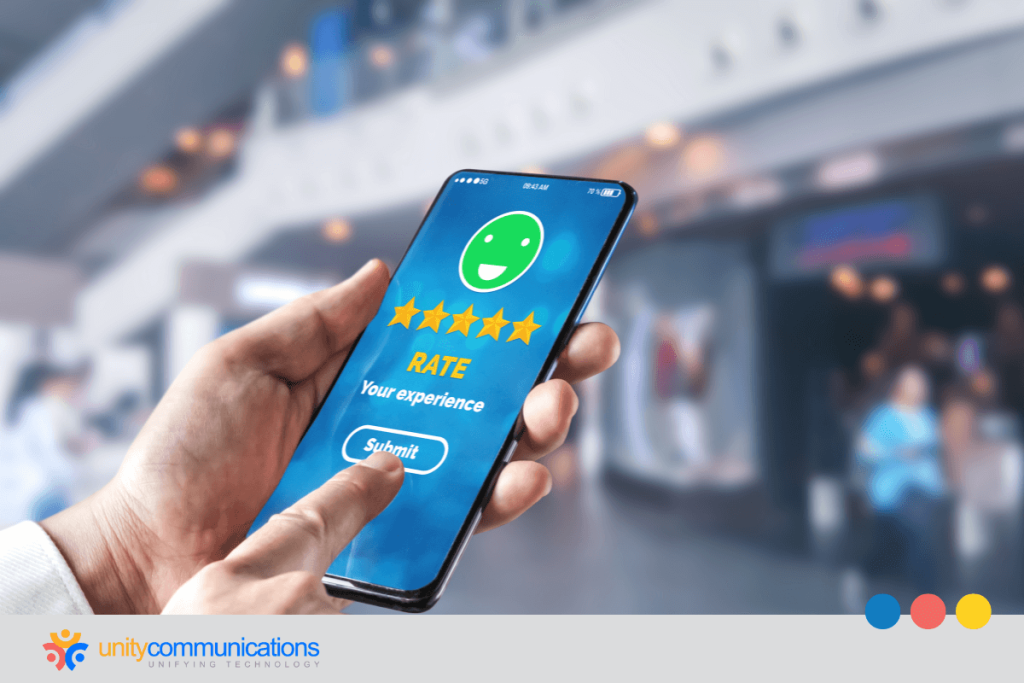Table of Contents
Customer satisfaction is a growth driver for companies that want to expand exponentially. Companies can achieve this by delivering world-class customer service and improving customer satisfaction through call center business process outsourcing (BPO).
BPO firms use customer experience strategies to promote and support their clients’ products. Call center BPO clients see numerous benefits, including improved customer interactions and a positive customer experience. Improved experiences generate positive word-of-mouth for the client company, provide a competitive advantage, and raise brand visibility.
This article identifies actionable strategies for improving customer satisfaction through a call center BPO.
Ways To Improve Customer Satisfaction Through Call Center BPO
So what is BPO? This approach involves outsourcing call center-related functions to a third party. Call center BPO has the same goals as in-house operations (to improve customer experience) and additional ones of its own, such as the following:
- Running the client’s contact center under agreed-upon standards is more affordable than if the client were to run it internally
- Reducing customer churn rate by consistently delivering effective customer support and following service-level agreements (SLAs)
- Gathering and reporting customer feedback to the client company
Companies can leverage outsourcing firms to improve the call center workflow, increase the number of returning customers, and provide a better overall customer experience. Companies can use strategies to improve customer satisfaction through call center BPO.
1. Choosing the Right Call Center BPO Partner
The initial crucial step in elevating your call center’s customer experience involves choosing a reputable outsourcing firm. The right BPO partner can oversee multiple facets of your operations, resulting in enhanced customer satisfaction and the cultivation of enduring brand loyalty. Typically, a vendor’s services come with enticing cost-saving strategies and revenue-generating prospects.
A third-party service provider takes on diverse responsibilities, with handling customer inquiries just the tip of the iceberg. They can support other front-office functions, including sales, dispatch, customer assistance, and outbound calls.
A dependable vendor effectively functions as an extension of your in-house team and boasts specialized knowledge within your industry. Additionally, they diligently track customer histories and behaviors, offering actionable insights to bolster your support efforts.
At the outset, the benefits of working with a call center BPO include:
- Significant labor cost savings of up to 70% for offshore solutions,
- Fewer contact center agents to pay,
- Global access, round-the-clock coverage, and the ability to scale up or down based on demand and high-impact service times
- Minimized customer efforts during the interaction,
- Practical solutions for your call center operations’ pain points,
- Increased efficiency and speed in issue resolution, positively impacting customer satisfaction rates, and
- Streamlined customer journey.
2. Using Effective Agent Training and Development
Every BPO worker undergoes thorough and adequate training for the roles they are employed to perform, and contact center agents are no exception. Outsourcing firms train agents appropriately to encourage exceptional customer service delivery. Even remote agents undergo training using cloud-based training software.
The better the agents are at their jobs, the better the customer experience in your call center. According to a report from American Express, 62% of customers find agent knowledge and resourcefulness a key to a positive experience.
A customer service agent who lacks knowledge about your brand and products will hamper customer satisfaction. Hence, BPO firms cannot afford untrained agents to handle calls. Instead, they provide rigorous and continuous training to ensure compliance with your call center standards.
Well-trained agents have expanded skill sets and are up-to-date with industry changes. They treat buyers compassionately. They are also more confident and comfortable with their jobs, increasing productivity and employee engagement.
3. Continuously Improving Call Center Strategies
Achieving continuous enhancement in customer satisfaction through call center BPO is notably more attainable than in-house efforts. Your chosen BPO partner actively contributes to enhancing your customer service endeavors. Even leading brands recognize the significance of staying ahead of competitors and remaining attuned to evolving customer expectations.
The continuous improvement process encompasses every stage, from initial brainstorming to the eventual implementation of strategies. The following are the key steps involved in formulating and executing improvement strategies within call centers:
- Gathering insight: Customers serve as a valuable source of information for identifying areas requiring improvement in the buyer’s journey. Your BPO partner establishes effective mechanisms for collecting feedback, which may encompass surveys, focus groups, and attentive listening during customer interactions through self-service, social media, or email channels.
- Identifying opportunities:The realm of improvement also includes looking into areas where innovation can provide significant benefits and increased value to customers. This phase includes selecting improvements that will have a direct impact on existing customer loyalty. Simultaneously, discovering innovative ways to interact and reach potential target audiences is critical for recruiting new customers.
- Planning: Following identifying opportunities, meticulous planning becomes the subsequent imperative. It is crucial to ensure that the improvement strategy is meticulously structured to yield the expected results.
- Implementing strategies: The success of your improvement strategy hinges on the active involvement of frontline agents and management, who should regard it as a collective project. Establishing measurable, straightforward deliverables and objectives helps clarify what team members can anticipate from the project.
4. Streamlining Interactions with the Latest Technology Solutions
Call center technology is vital for improving customer service. Most agree that technology is fundamental to creating a better customer experience.
Call center tools include software and hardware that manage customer relationships, automate processes, analyze data, and predict behaviors. It includes any technology call centers use to oversee daily operations, complete tasks, and interact with customers.
Here are examples of call center technologies you can access when working with a BPO partner:
- Omnichannel solutions: Customers must be able to reach you how they want, when they want, and on the communication channel they want. However, that is just the bare minimum. They want a consistent experience across all platforms, meaning they can avoid repeating themselves when switching between channels and agents.
- Analytics and reporting: Manual monitoring and observations are a thing of the past. Advanced analytics provided in real time helps you quickly make adjustments as needed.
- Cloud contact centers: Cloud and remote-based contact centers are more affordable and flexible since your operation is not in a single location. With cloud-based solutions, you can expand beyond time zones and geographical borders to access a wider talent pool. Mobile functionality is also a perk.
- Artificial intelligence (AI): Although unlikely to replace human agents, AI and automation are essential tools. AI helps you understand your customers better, while automation handles straightforward requests without human input. The key is to leverage AI along with human agents, not replace them.
- Speech analytics: Speech analytics combines speech recognition software with text analysis and pattern spotting. It uses established rules to record customer conversations and translate them into machine-readable text. The system then detects performance issues in each interaction.
- Self-service options: Ninety percent of customers globally expect companies to have an online self-service option. Consider creating an online knowledge base that answers your frequently asked questions (FAQs). It should be available anytime, anywhere. Your customers will appreciate the option to find information without agent intervention.
5. Evaluating Performance with Key Metrics
Strategic outsourcing is critical to success in customer service. Using metrics and data is also helpful because it allows you to understand your call center’s daily operations and set and track goals.
Although each call center has a unique way of measuring performance, common standards for KPIs and metrics apply. Those metrics generally fall under specific areas and show critical insights into the customer experience, highlighting quantity and quality equally.
Best practices recommend measuring the following key areas to maximize satisfaction and maintain a high-performance call center:
- Call initiation
- Agent productivity
- Customer experience
Handle time and talk time are two factors that significantly affect customer satisfaction scores and indicate your call center’s overall productivity and efficiency. Here are standard call center performance metrics to track:
- First call resolution
- Average speed of answer
- Average time in queue
- Service level
- Percentage of calls blocked
Each customer call can make or break your brand, so making each call center interaction count is vital.
The Bottom Line
A great experience begins with your customers’ interactions with call center agents. When customers reach out, they want more than mere issue resolution. They expect a courteous agent who respects their time and empathizes with them to greet them. You can follow the strategies above for improving customer satisfaction through call center BPO.
Unity Communications can help you set up an external call center at a fraction of the cost. Let’s connect to find out more.




